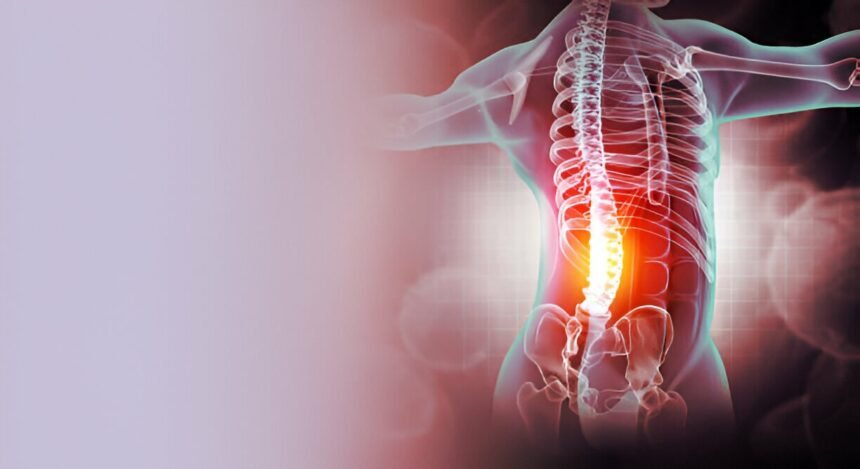Do you often struggle with back pain? Everyday habits like poor posture and using your phone hunched over could be the cause. We’ll look into common causes of back pain and share tips on how to prevent it. Keep reading to learn more if you want to eliminate that nagging ache.
What Is Back Pain?
Back pain affects millions worldwide, often stemming from issues in the spine, muscles, or spinal discs. It can result from various activities and habits and significantly impact quality of life. Effective management often includes physical therapy and other spine care measures.
The spine supports the body’s weight and movement, making it prone to injuries and degenerative conditions. Poor posture, lifting heavy objects, or a sedentary lifestyle can lead to back pain. Common symptoms are aching, stabbing sensations, or radiating pain down the legs, often with stiffness and reduced flexibility.
Spinal discs cushion the vertebrae, and when they degenerate or herniate, they can compress nerves, causing sharp pain and numbness. Treatment options vary from rest, medication, and physical therapy to injections or surgery, depending on the pain’s cause and severity.
What Are The Causes Of Back Pain?
Back pain has many causes, including poor posture, a sedentary lifestyle, heavy lifting, lack of exercise, incorrect sleeping positions, and smoking. Poor posture stresses the spine and muscles, leading to chronic pain and serious issues like herniated discs.
A sedentary lifestyle weakens back-supporting muscles, causing discomfort and long-term damage. Heavy lifting without proper form strains the spine, risking injuries—lack of exercise results in weak core muscles, increasing pressure on spinal discs.
Incorrect sleeping positions can stress the spine, while a supportive mattress and proper pillows can help maintain alignment. Smoking impairs blood flow to spinal discs and triggers inflammation, worsening back pain.
What Are The Everyday Habits That Can Cause Back Pain?
Sitting For Long Periods Of Time: Sitting for long periods, especially with poor desk posture, can strain the spine. Back and neck muscles work harder without proper support, leading to fatigue and discomfort. Over time, this can cause muscle imbalances, herniated discs, and chronic pain. An ergonomic office chair promotes better posture, reduces spinal pressure, and provides lumbar support.
Carrying A Heavy Bag On One Shoulder: Carrying a heavy bag on one shoulder creates an imbalanced strain on the spine, causing muscle strain and misalignment. This can lead to long-term issues. Using a backpack distributes weight evenly across both shoulders, reducing strain and promoting better posture. Padded straps can further cushion the pressure on your shoulders.
Using A Non-Ergonomic Workstation: A non-ergonomic workstation forces the spine into unnatural positions, leading to musculoskeletal issues and chronic pain. Creating an ergonomic workstation ensures proper support and alignment while working. Adjusting your chair to the correct height and distance from the desk is essential for promoting a healthier posture.
Wearing High Heels: Wearing high heels alters posture and places additional strain on the spine. The body’s center of gravity shifts forward, causing the lower back to arch excessively, leading to muscle tightness and pain. Supportive footwear with adequate arch support and cushioning helps alleviate pressure on the spine and promotes proper alignment. Opt for shoes that provide stability and shock absorption.
Not Stretching Before Physical Activity: Not stretching before physical activity increases the risk of muscle spasms and strains the spine. Stretching improves flexibility, blood circulation, and performance. Effective stretches include hamstring stretches to loosen thigh muscles, quad stretches to prevent front thigh tension, and trunk rotations to enhance spinal mobility.
Using Your Phone Or Tablet In A Hunched Position: Using your phone or tablet in a hunched position strains the spine and encourages poor posture. Constantly bending over leads to stiffness in the neck and shoulders, causing discomfort and pain. Hold the device at eye level to reduce neck strain, take frequent breaks to stretch, and use ergonomic accessories like stands or cushions to alleviate pressure on your back.
How Can You Prevent Back Pain?
Preventing back pain involves maintaining good posture, staying active, using proper lifting techniques, investing in supportive sleeping arrangements, and taking regular breaks. Good posture keeps your spine aligned and reduces strain, whether sitting, standing, or lifting.
Staying active strengthens muscles and supports the spine, with exercises like planks, bridges, yoga, and pilates improving strength and flexibility. Proper lifting techniques, such as bending at the knees and keeping objects close, minimize spinal strain.
A supportive mattress and pillow ensure proper spine alignment during sleep, reducing discomfort. Frequent breaks from sitting promote blood flow and prevent muscle stiffness, enhancing overall well-being. For personalized advice and treatment options, consult with Physicians Group LLC to address your needs and effectively prevent back pain.










